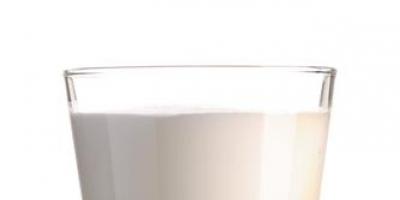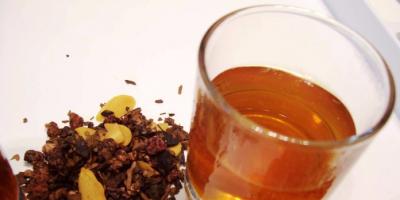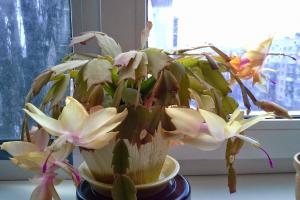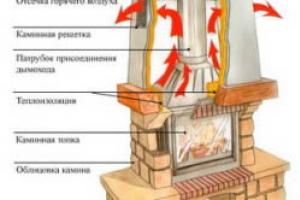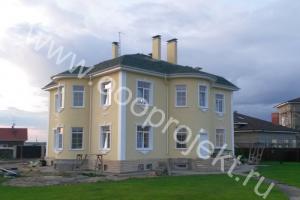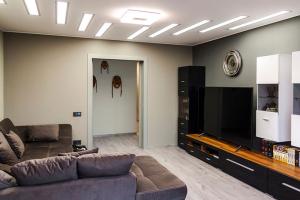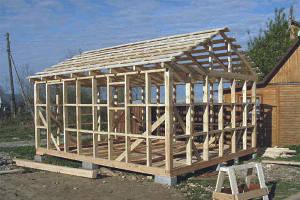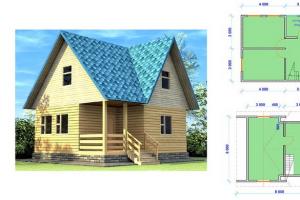Program content:
1. To consolidate the implementation of the main types of movements:
- walking on stuffed balls while maintaining balance;
- climbing the gymnastic stairs with the transition from one flight to another and complication - descent along the rope;
- vigorous jumping using a trampoline;
- somersault-roll.
2. Improve speed-strength qualities, speed of reaction.
3. Exercise in the ability to self-examine your physical condition by pulse; regulate breathing.
4. To instill in children respect for professions associated with a risk to life.
5. To form a trusting attitude towards the partner, responsibility and purposefulness.
Equipment:
- maps;
- trampoline;
- gymnastic rollers according to the number of children;
- stuffed balls 8 pcs;
- ropes stretched on 2 gymnastic benches;
- tape recordings on cassette;
- 3 stairs;
- rope;
- toy "puppy";
- icons.
Preliminary work:
- conversations on this topic.
- reading the work “The Story of an Unknown Hero” by S. Mikhalkov.
- role-playing games.
- watching the programs "Rescuers".
Methods and techniques:
a) submission to a common goal;
b) relationship with other activities;
c) verbal, visual and practical.
a) questions;
b) display;
c) modeling;
d) circuit training.
During the classes
Children under musical accompaniment (background) go to the gym, line up. The music subsides, a voice is heard on the “radio” (recording on a tape recorder):
Attention! Attention! We are recruiting friendly, brave, brave guys who will come to the rescue at any moment to the rescue team. You will receive the terms and conditions of the competition by fax.
Instructor: Guys, what are we going to do? Are we accepting an offer? You heard what guys are needed, but are you confident in each other? (Answers of children). Then we'll check. Now we are walking blindfolded.
Trust game: “Blindfolded walk”.
Goal: The game promotes trust and forms responsibility for the other person.
Course: Children, if desired, are divided into pairs - a blindfolded follower and a leader. The leader stands behind the follower, puts his hands on his shoulders. Task: go through a dense forest, through a windbreak. The follower must fully trust the leader. After passing a given distance, the children change places. At the end of the game, they discuss the feelings of the children during the game, in which role they felt more confident.
Instructor: Yes, I see that you trust each other, and I trust you. (I give my palm, the children take turns placing their palms on top, shaking, saying: “I can handle any trouble if a friend is with me!”)
Guys, to become a real lifeguard you need to have good physical training. March to the training ground!
Warm up.
Walking “Snake” is usual in alternation with walking:
a) on toes, hands up “fingers greet” (alternately, all fingers on the right and left hands are connected to the thumb);
b) on the heels, hands behind the head - to the sides, D-8 steps each
c) "unwind" - lunges with a turn of the torso, arms bent at the elbows at chest level.
d) “be careful” - on a signal, take a sitting position in support, throw straight legs back 1-2-3-4, stand up and continue walking. D-2-3 times.
Running - 1-1.5 minutes - normal in alternation with running with high knees; with overflowing of the lower leg back; easy run, on a signal, lie on your stomach, get up to continue running.
Restoration of breathing in walking; pulse check.
Instructor:
In order not to waste time for nothing, we need to take simulators.
Let's warm up together, we will get into the rescuers!
(Children take the rollers and stand scattered)
O.R.U. with gymnastic rollers.
1. “Keep your balance”
I.p: roller in the hands below, o.s.
B: turning the head to the right - to the left; back and forth; inhale - exhale. Offer to do everything with your eyes closed. T - slow, do not lower the chin when turning. D - 2 times in each direction.
2. “Pass the video above your head”
I.p: legs crossed, roller in the right hand, posture.
B: 1 - transfer of the roller above the head, through the sides up, look up - inhale; 2 - i.p. D - 6-7 times. T - avg.
3. “Turn - roller forward”
I.p: legs apart, roller in bent arms in front of the chest.
B: 1 - turn to the right; 2 - i.p. D - 6-8 times.
4. "Hero"
I.p.: o.s., video below.
B: 1 - lunge forward, roller up, stretch up, bend in the lower back, raise your head - inhale. 2 - i.p. exhalation. D - 6 times. T - medium.
5. “Roll the roller”
I.p: sitting on heels, roller in hands on the floor in front of him.
B: 1 - roll the roller forward, moving to the position lying on the stomach - inhale; 2 - exhale, roller in straight arms; 3-4 i.p. D - 6-7 times. T - slow.
6. “We raise the roller, touch it with our foot”
I.p: lying on your back, roller in straight arms behind your head, legs together.
B: 1 - roller up, arms straight, right leg up, do not tear your back off the floor, legs straight, socks pulled back, raise your head; 2 - linger; 3-4 i.p. Repeat with the left leg. D - 6 times.
7. “We roll the roller - we strengthen our hands”
I.p: lying on the stomach, legs together, head down, arms straight.
B: 1 - roll the roller towards you, raising the upper body, arms straight, bend over - inhale; 2 - linger; 3-4 slowly return to SP, relax. D - 5 - 6 times.
8. “Nimble legs”
I.p: sitting, legs bent at the knees, feet standing on the handles of the roller, emphasis on hands, back straight, shoulders lowered.
B: 1 - roll the roller forward until the legs are straightened, fix the position; 2 - i.p. D - 7 -8 times
9. "Jumping"
Jumping option: legs together forward - backward ”to the right - to the left; change of legs in a jump. Roller in bent arms in front of the chest.
Restoration of breathing, the rollers are removed in place.
Instructor: Well, guys, you conducted the training very cleverly. Let's see what tests we are offered to pass.
(They approach the “fax” and take cards - diagrams depicting an obstacle course. Children examine, discuss. I propose to appoint a leader who will be responsible for building and passing an obstacle course.)
Obstacle course: D - 4-5 times.
- Walking on medicine balls while maintaining balance.
- Climbing the gymnastic ladder with the transition to the next flight, descent along the rope (belay)
- Jumping on a trampoline, jumping with an active swing of the arms forward - up, jumping off the “rocket” to the indicated place.
- Perform a somersault
- "Web" - jumping (stepping over) over stretched ropes.
Zvenevoy reports on the passage of an obstacle course. (Children line up)
(Sound recording) - An emergency, the girl lost her puppy, she begs to be found. According to the latest reports, he was seen near the reservoir. The request of all rescuers to direct all their efforts to search for and rescue the puppy.
Instructor: Guys, what are your suggestions? (children's answers) We need to examine the territory in sections.
Mobile game "Circles".
(To the musical accompaniment, the children improvise, the music subsides, according to the scheme, perform the appropriate construction - 2 times. For the third time, after completing the task, the children are invited to close their eyes, listen and concentrate. A dog is whining, a puppy is found).
Instructor: Well done guys! We will return the puppy to the girl, I think she will be very happy.
(The teacher enters dressed in camouflage uniform).
Hello! Thank you lifeguard friends. Yes, yes, I was not mistaken, you are enlisted in the rescue squad of the children's brigade. You passed all the tests with dignity, showed your endurance, ingenuity and endurance, and even saved the puppy, I will give it to the girl and tell about you. And I hand you the badges of distinction “Rescuer”.
(each is given a badge).
The instructor suggests restoring your strength with a “health” drink. The children leave the room.
Literature:
- L.V. Yakovleva; R.A.Yudina “Physical development and health of children 3-7 years old” Program “Start” - 2005 Moscow.
- L.V. Chernetskaya “Development of communication skills in preschoolers” Rostov-on-Don 2005.
Synopsis of sports activities dedicated to the Day of Cosmonautics for children of the senior group
"School of young astronauts"
1 Provide an opportunity to realize their motor skills and abilities against a positive emotional background in a non-standard situation.
2 Increasing motivation for physical exercise, both among children and adults.
3 To cultivate purposefulness in achieving results, a sense of camaraderie and responsibility to the team.
Preliminary work:
Conversations on the topic "Space", learning poetry, preparing riddles and questions, conducting individual work with children to develop the main types of movement.
Sport equipment:
Hoops, rings, balls, gymnastic benches, arcs, a set of "Logic chain".
Venue: gym
Leisure progress:
Children and parents line up in one column and enter the hall to the music.
Host: Hello, dear children and dear parents! Today our sports leisure is dedicated to an important holiday: Cosmonautics Day.
Would you like to become astronauts and fly on a space rocket?
You know that dogs were the first animals to fly into space. Their names were Belka and Strelka, and only then did people fly. Back in 1961, the first man flew into space. Say his name. He was the first to go into space on a Soyuz space rocket.
Instructor: It is difficult to become an astronaut, you need to train a lot. Are you ready to workout? Teams are invited to enter the school for young cosmonauts.
Children are built in two columns opposite each other.
Martians
There are many of us brave guys in the world,
That they want to rise into the blue sky.
To fly into space and to distant stars,
Now we are ready to show ourselves!
earthlings
Become an astronaut - we all know
The task is difficult for everyone.
Competitions are starting
And we firmly believe in our success!
Instructor: Well done team! I think our fantastic flight will take place today! But first I want to introduce our distinguished jury. It will evaluate the competition.
1A game with hoops "Rocket flight"
There are hoops on the floor. Children and parents make pairs and stand in hoops. Team members recite poems in chorus:
Fast rockets are waiting for us to fly to the planets.
Which one we want.
Let's fly to this one.
But there is one secret in the game.
There is no room for latecomers!
At the end of the music, children and parents stand in pairs with their backs to each other in a hoop, raise their hands up, depicting a rocket. Those who did not have enough hoop sit on the bench.
Instructor: We did a good warm-up, let's start training. There are a lot of planets and stars in space, let's imagine that we are flying in space and flying past the stars.
2Relay "Collect your star"
There is one hoop on the floor for each team. Each participant has a yellow ring. On command, you need to lay out the rings around the sun. The task is considered completed when the last participant crosses the start line.
Instructor: An astronaut must be dexterous, fast, courageous, able to overcome various obstacles.
3 Relay "Obstacle Course"
Listen to what path you need to overcome:
- jump over the gymnastic bench 5 times
- crawl sideways under the arc and run back
Get ready! March!
4 Relay "Friendship"
Physio instructor: You probably know that friendship is indispensable in space, now we'll see how the guys can negotiate and pass the ball to each other.
There are three hoops on the floor on one side and three hoops on the other, on command, the children in pairs throw the ball to each other from the chest, running from one hoop to another, pass the ball to the next participants. Parents are the last to go.
5 Relay "Meteorites"
Physio instructor: Look guys what meteorites fell on our Earth, astronauts are also studying them, we will study and play with them.
Children get on the team:
- pass the ball overhead while sitting one after another with legs to the sides
- lying on your back
-standing
The transfer of the ball is considered complete when the captain has the ball.
Instructor: Guys, among the planets of the solar system there is one unusual planet in appearance. Who knows what it's called? (Saturn)
In our hall there are also such planets, a game is being played to rebuild the "Rings of Saturn" (rebuilding in two circles in motion)
Physio Instructor: Our guys, like small stars in space, shine very brightly, let's everyone get their star
7Relay race "Get a star"
-Climb the Swedish wall, remove the star from the upper crossbar, pass the baton to the next participant.
Physio Instructor: The last relay race remains, which will show
who will graduate from astronaut school successfully.
8Relay "Continue the logical chain"
In the hoops are plastic geometric shapes, for each team the beginning of the logical chain is laid out. on command, each child continues the chain, the team that correctly completed the task wins.
Team building in progress
Instructor: Well done! Everyone tried to help each other. In relay races and games they showed speed, courage, endurance, like astronauts.
Diplomas of young cosmonauts are awarded.
The culture of a healthy lifestyle acts as one of the main components of the general human culture. The problem of health promotion in modern society is relevant, especially when it comes to children. Caring for the health of a child, and even an adult, has become a priority all over the world. After all, any country needs active and healthy, creative and harmoniously developed individuals.
Unfortunately, in recent years, the number of frequently ill children who do not have a stable motivation to maintain and strengthen their health has increased. For a number of years, doing health work in kindergarten, we drew attention to the increase in the incidence of preschool children. There are many reasons for the increase in the incidence. This includes bad ecology, unbalanced nutrition, and a decrease in physical activity, etc. Today it is important for us, adults, to form and maintain an interest in health improvement, both ourselves and our children.
In this regard, a project has been developed, the implementation of which promotes a healthy lifestyle. We tried to organize our work in such a way that all the activities of a preschool institution would be included in the model of a health-saving system, so that the child himself would become an integral part of it and be involved in the work of creating it.
The final event of this project was the sports leisure "Journey along the path of health"
We are confident that developing the right habits, combined with teaching preschoolers how to improve and maintain health, will lead to positive results.
Download:
Preview:
Municipal preschool educational institution combined type kindergarten No. 49 "Ladushki"
City methodical association
for teachers of preparatory groups
Direction "physical culture and health"
ABSTRACT
leisure
by educational field
"Knowledge"
in the preparatory group
"Journey on the path" Health "
Physio instructor Ledneva T.A.
G. Serpukhov, April, 2014
Direction: "physical culture and health"
Integratable educational areas:"Knowledge" "Health", "Physical culture", "Communication", "Socialization", "Fiction", "Safety", "Artistic creativity". "Music"
Forms of activity:joint activities of adults and children.
Activities:playful, communicative, productive,
Applied technologies:gaming, personality-oriented, ICT.
Purpose: to form in preschoolers an idea of health as one of the main values of human life.
Program tasks:
"Knowledge":
- to give children a general idea of health as a value that must be constantly taken care of,
- to teach the child to consciously approach nutrition;
- reinforce children's knowledge about the benefits of healthy eating,
- know the difference between useful and harmful products;
- enrich children with knowledge about the benefits of physical exercise, the role of physical activity, the effect of physical exercise on the child's body,
- show the importance of compliance with the regime in improving the health of each person;
- to consolidate the concept of the importance of the regime of the day;
- educate the desire to adhere to the rules for its implementation,
- improve the ability to read maps
- development of cognitive interest, visual-figurative thinking, memory, attention;
- development of the ability to formulate their assumptions, to draw conclusions.
"Health":
- expanding the horizons of children in terms of ideas about a healthy lifestyle,
- to form in children the need to be healthy;
- preservation and strengthening of the physical and mental health of children,
- contribute to the creation of a favorable psychological climate.
"Physical Culture"
- promote interest in sports,
- to cultivate interest in movement, the desire to independently engage in physical exercises,
- improve motor skills
- flatfoot prevention,
- develop physical qualities: dexterity, courage,
- educate the ability to clearly follow the instructions of the teacher and the rules of the game.
"Communication":
- develop spoken language
- development of free communication with adults and children;
- education of the culture of speech communication,
"Socialization":
- creating an emotionally positive mood in children from the result of their work,
- to cultivate a sense of collectivism, the ability to work in a team,
"Fiction":
- to consolidate the skill of expressive reading of poems,
- cultivate love for folk wisdom,
"Safety"
- formation of a holistic picture of the world in expanding the horizons in terms of ideas about the safety of one's own life,
- to consolidate children's knowledge about healthy and unhealthy foods,
"Artistic Creativity":
- development of perception, imagination, the desire for creativity,
- develop fine motor skills of hands - improve the skill of tying a bow,
- fostering a positive attitude towards productive activities, the desire to do the work yourself,
- development of cooperation skills,
"Music":
- develop children's singing skills,
- to improve the skills of theatrical activities - to convey the image of the hero,
- development of children's ability to act under soft musical accompaniment,
- cultivate a love for folk music.
Material:
- demo:map of the “Health” trail, symbols of stops, Sloth costume, Microbe, Glutton, presentation of the daily routine, food pyramids, a basket with “dirty” vegetables and fruits, a bottle of water, a dummy of lemon and garlic, a tray, useful and harmful foods, chairs with pasted flowers,
- physical education equipment:rope, gymnastic bench, obstacles,
- dispensing: colored ribbons, paper flowers,
- technical means:multimedia installation, tape recorder.
Preliminary work:
conversations about a healthy lifestyle, healthy eating, hardening, daily routine, the importance of cleanliness;
conducting outdoor games;
reading works about healthy lifestyle, memorizing poems, proverbs and sayings;
viewing albums, illustrations;
drawing.
Leisure: "Journey along the path" Health "
Stroke:
The children enter the room. Hello.
Child: - We live in a large, generous and rich country!
And she doesn’t feel sorry for anything for us guys!
New stadiums are given to us not in vain!
May we grow up healthy, friends!
To make everyone bolder
And with good deeds he helped his country!
We have swimming pools, stadiums,
The concern of the motherland is enormous.
Educator: - Our state makes sure that all the children of the country are healthy!
Educator: - On April 7, people around the world celebrate Health Day. Why do you think such a day exists?
Children: -
Educator: - Right, April 7 is World Health Day. This date is set so that people can understand how much health means in their lives.
Health is the most precious thing a person has. What do you think health is?
Children: - This is when you are not sick, when you are in a good mood, you want to go in for sports, lead a healthy lifestyle, do good deeds ...
Educator: - Everyone talks about health all the time. Folk wisdom says:
In a healthy body - ___ ( Children: - healthy spirit.)
Health is in order - ___ ( Children :- thanks for charging.)
If you want to be healthy - ___ ( Children: - harden.)
Cleanliness - ___ (Children: - a guarantee of health.
Educator: - To be healthy, you need to know and be able to do a lot.
Would you like to take a trip along the Health Trail?
Children: - Yes.
Educator: - The path will not be short. Along the way, you will experience trials.
In order not to get lost, we will check our path with a map.
(Children approach the map)
Educator: - Let's see where we have to go (looking at the map).
Children: - We have to go along the narrow road to the first station.
Educator: - Fine. Guys, be careful, help each other along the way. Let's hit the road!
(Children follow each other with a side step along the rope)
Educator: - That's the station. What do you think this station is?
Children: - "Mode of the day"
Educator: - How did you guess?
Children: - The icon has a clock.
Educator: Health has enemies
Don't befriend them
Among them is the quiet Laziness
Fight it every day!
(Lounging, a girl sits at the table - Laziness, plays a tablet ... sees children, stretches ...)
Laziness : Who yawns all day without washing his face
And he dreams of one thing: would he sleep all day?
Do you recognize me? After all, it's me - I'm Lazy!
I’m not used to order, I don’t like to do exercises.
I do not like to work, but I like to be lazy.
And even I'm too lazy to have fun,
Just be lazy, lazy all day long!
Educator: - Our children in kindergarten have no time to be lazy, they live according to the regime. If you want, Len, the guys will tell you how we live in kindergarten.
(Showing the presentation is accompanied by reading poems by children)
- I'll get up early in the morning
And I'm going to the parade.
To your favorite kindergarten.
- Every day on schedule
We start charging.
- After these exercises
Let's eat breakfast.
- After breakfast we play
Or we get knowledge
To be able to do everything at school,
Let's get smarter in the kindergarten.
- Fresh air is useful
For a walk every day
It's not too lazy to go out with a group!
I really like to walk
And play outside!
- Everyone was invited to dinner
I will eat soup and a cutlet.
- The bedroom is quiet and comfortable
And falling asleep isn't hard at all.
The dream did me good
I'll be doubly healthy.
- I hurry to the washbasin
I'll brush my hair.
- And for lunch, a casserole
It's such a shame not to eat.
- After lunch again
- For an evening walk
We'll go for a walk again!
Run, jump and jump.
- Here comes my mother
I'll go home now.
I say goodbye to the teacher.
I smile at all the guys.
I know tomorrow again
Happy walking in the garden!
(Laziness listens attentively, becomes interested)
Laziness: - And I'm with you! I want to live like you - according to the regime!
Educator: - Well, guys, let's take Len? Let's learn not to be lazy and be healthy?
Educator: - Let's continue on our way. Let's go to the map and see where we go next.
Children: - We need to go across the river on the bridge to station 2.
Educator: - Right. Slowly we crossed to the other side of the river.
(Children one after another walk along the bench to station 2, where they
met by a physical instructor.)
Instructor: - Fizkult-hey guys! I am glad to see you at Sportivnaya station. Oh yes, there is an Olympian among you!
Educator: - Yes, our Dima is the winner of the competition "Dad, Mom, I am an Olympic family." They took 2nd place in the competition.
Instructor: - It was the Winter Olympics. Now we will check if you know winter sports. You need to solve riddles, but not simple ones, but motor ones. Our Olympian will help me with this.
(The child depicts sports:
skating, biathlon, hockey).
Instructor: - Great! But the Olympic Games are not only in winter. What else can they be?
Children : - Summer, Paralympic.
Instructor: - What can you tell about the Paralympic Games?
Children: -
Instructor: - Right. All people who think about their health go in for sports.
Instructor: - I suggest you playgame "Gemini".You stand in a circle one after another, put your hands on each other's shoulders and follow my commands with your eyes closed.
(Children stand in a circle and follow the instructions of the Instructor:
Sit down.
Get up.
Get up on your toes.
Lean to the left.
Lean to the right.
Stand on your right foot.
stand on the left foot).
Instructor: - Was it difficult for you? Such a game will help you feel each other and come to the rescue. You were one friendly team. Be healthy!
Children: - Always healthy!
Educator: - Guys, let's move on. Let's look at the map further.
(Children go to the map)
Children: - We need to go through the swamp to the next station.
Educator:- The guys need to go through the swamp carefully, trail after trail, so as not to fail. Take your time. Carefully. Let's hit the road!
Educator: - Children, where do you think we got to, what station is this?
(D children look at the symbolic image of the station)
"Microbe" runs to the music
Microbe: - I'm very cunning, ha ha ha, being healthy is nonsense!
Stick your dirty finger in your mouth! How are you, how is your tummy?
Well, does your head hurt? All this amuses me!
How handsome am I! I'm Microbushka - good.
Hello dear guests!
Take a treat, right from the garden - a meal!
(Offers children dirty vegetables and fruits.
Children thank, but do not take)
Microbe: - Well, why don't you take it? Take it, eat it!
Children: - Dirty fruits and vegetables should not be eaten. They need to be washed, scalded with boiling water. You must wash your hands with soap.
Microbe: - If you don't want to eat, drink some water from the spring.(Holds out a bottle of water.)
Children: - No. We won't drink either. You can not drink unboiled water. Educator: - That's right, guys! Vegetables and fruits need to be washed. Boil water. Cleanliness is the key to health!
Microbe: - What are you ... Well, okay! Means I am such a microbe that you can’t destroy just water ... I - infection!
(Doctor enters)
Doctor: - Hello guys! Well, microbe, are you scaring children? Guys, indeed, not all microbes die from clean water. But I know a very good remedy for infection, guess what it is:
This vegetable is like a head,
In it, the teeth settled deftly,
How do we clean a clove
We kill all microbes.
(Garlic).
I'm the sourest fruit in the world
But I am useful even to children.
From warm countries I send you a bow!
Who am I? - Your yellow friend...
(Lemon)
Doctor: - And now in the game we will see how these healthy vegetables and fruits kill germs. The microbe will try to "infect" you. The one to whom the microbe touches freezes in place. But he can be saved by giving him onions or garlic.
(An outdoor game is being played.
After the game, the beneficial substances of lemon and garlic destroyed the Microbe - take off the suit and the child continues the journey with everyone)
Doctor: - Well done! You not only know the rules of cleanliness and hygiene, but also observe them! You can continue on your way. Be healthy!
Children: - Always healthy!
caregiver : - Children, look again at the diagram.
Children: - We must go to the flower meadow.
Educator: - In the clearing - relaxation. Let's go and sit down.
(Children pass and sit on chairs with flowers).
Educator: The sun is shining, the waters are shining,
Smile on everything, life on everything
The trees tremble outside the window
Swimming in the blue sky!
What is it?
A sunbeam peeked in on us.
(Relaxation "Sunny Bunny". Quiet music plays.)
Educator: Sit comfortably, close your eyes. Imagine that a sunbeam jumped on your forehead, stroke it, and now it jumped on your nose, on your cheeks, stroke them. And now the bunny jumped on your neck, we rub your shoulders and them, the bunny quickly jumped onto your tummy, let's stroke it too. Now open your eyes and wave your hands, say: "Goodbye" to the sunbeam.
Educator: - Children, have a rest, we will continue the way. Let's look at the map - a diagram, where should we go next?
Children: - We need to jump over an obstacle on the way.
(Children jump forward to get to the next station)
Educator: - Guys, what is this station?
Children: - Station "Healthy food".
Doctor: - Girls and boys
And the guests are our viewers
About proper nutrition
Wouldn't you like to hear?"
(The Eater is sitting at the table.
There are a lot of different foods in front of her - harmful and healthy ...)
Eater: There is no need for fun, songs, if I want to eat!
I really want to eat brothers - I will swallow your whole holiday!
Your games, dances, jokes - to me, that with duck apples.
Cakes, buns, cookies, and sweets, and jam -
I'll eat everything indiscriminately - because I'm friends- Glutton.
Educator: - Children, look how the Eater spoils his health, is this how they eat?
Doctor: - Do your children know about the rules of healthy
nutrition?
Educator: - Children, let's talk.
Children: - You need to eat vegetables, fruits; overeating is harmful; you need to eat according to the regimen; drink freshly squeezed juice; eat porridge in the morning.
Doctor: - Children, help the Eater,Tell me which foods are good for health and which are bad.
(Children put the wrong products in the basket, leave the useful ones on the table)
Doctor: - Well done. And why do we have chewing gum in both harmful and useful products? That's right, chewing gum is bad on an empty stomach in the morning, but if you eat it after a meal, it cleans the mouth. This means that it is useful, and it is not the product itself that is to blame, but the person, if he does not use it correctly.
Doctor: - Well, Eater, remember everything? Our children know about the "pyramid" of proper nutrition. Do you want to know what it is?
(View presentation of the food pyramid with the game).
Doctor: - Look, children, what products occupy the main place in a person’s life, are there more of them? Name.
What products are located on the second "floor"? There should also be plenty of them in the diet.
What else is important for human health that we eat every day, not in large quantities?
Why candy, sweets at the very top? They should be very few in the diet. These are products of joy, they should be consumed only on holidays.
- (to the Eater) What do you remember?
Doctor: - Now you can go on a journey with your children.(referring to children) Be healthy!
Children: - Always healthy!
Educator: - Let's go back to our map. Where will she show us the way?
Children: - We must come to the Good Mood station.
(They look at the map, check the route, jump to the Good Mood station)
Educator: - Scientists have proven that when a person laughs. Three times more air enters his lungs. And laughter prolongs life and trains our vocal cords. So laugh to your health! We invite you to listen to funny ditties:
We wish you friends
Always be healthy
But get results
Not possible without difficulty.
Try not to be lazy
Every time before meals
Before you sit down at the table
Wash your hands with water.
And charge
Daily in the morning
And of course chill
It will help you so much.
If you want to be healthy
Cheerful, smart and funny
Eat more vegetables
Fruits, cereals and borscht.
Breathe fresh air
Always whenever possible
Go for a walk in the forest
You at least sometimes.
We have revealed secrets to you
Follow all advice
And it will be easy for you to live!
Educator: - Well done!
Educator: - Guys, and now we will give our good mood to the guests. Here I have multi-colored ribbons on the table. And branches in a vase. Each of you will choose a ribbon, what mood you are in, and tie a bow.
(Children come to the table, take a twig and ribbon, tie a bow)
Educator: - How beautiful it turned out. We give our bouquet-mood to you, dear guests. Be healthy!
(Children give a bouquet to guests)
Educator: - Health is an invaluable wealth in the life of any person. Each of us has an inherent desire to be strong and healthy, to maintain mobility, vigor, energy as long as possible and to achieve longevity. I hope that today's trip was not in vain and you learned a lot from it. No wonder they say: "If you are healthy, you will get everything." So be healthy everyone, goodbye!
Healthy eating pyramid
Healthy eating pyramid
Synopsis of the GCD for the preparatory group of physical education dedicated to Victory Day .
Tasks: tell the children about Victory Day. To form a steady interest in doing physical exercises, to develop basic physical qualities. To cultivate purposefulness, perseverance and a sense of camaraderie when conducting collective relay races. To cultivate a sense of respect for the defenders of our Motherland, love for the Motherland.
Attributes and equipment: flowers according to the number of children; team emblems; cubes, balls, "salutiki" by the number of children; painted circles on the wall; 2 report bags, rope, 2 benches, 2 ladders, 2 packs, wooden planks, obstacle course net.
Preliminary work: looking at illustrations about the war, Victory Day, talking with children.
Reading the stories of S. Baruzdin "For the Motherland" from the book "Soldiers Walked Down the Street", L. Kassil "Monument to a Soviet Soldier" from the book "Your Defenders".
Reading poems by G. Rublev "Soldiers", T. Trutneva "Soviet Warrior", "The War ended with Victory", etc.
The course of the holiday
The gym is festively decorated with balloons, flags with Russian symbols.
Leading: Today is a holiday - Victory Day
Happy holiday - spring day
All the streets are dressed in flowers,
And sonorous songs are heard.
Where the guns don't roar
The sun is shining brightly in the sky!
We need peace for all the guys,
We need peace for the whole planet!
Children enter the hall in a solemn march to the music of the song.
Teams enter from two sides and line up in two columns.
Leading: Tomorrow we have a big holiday Victory Day. This festival
happy and sad at the same time. Joyful because our soldiers defended peace on earth. Sad because many of them died in the battles for the freedom of our country. They wanted us to live in a good, happy country ... They will forever remain in our memory. Those who survived this terrible war are few. Veterans are always given flowers on Victory Day.
Children perform general developmental exercises with red carnations.
Leading: You probably also want to be border guards or serve in the navy? Let's see what kind of warriors you will turn out to be.
Sports part.
Leading: Attention! Attention!
The competition starts
Strong, dexterous and skillful
Future soldiers.
The jury is presented to the children: the head teacher, the senior teacher, two parents.
Two teams participate in sports competitions - "Infantrymen" and "Border guards". Let's welcome them.
(Team greetings.)
Physical education instructor conducts sports competitions.
Leading: soldier to become
There is much to be learned.
Be agile and skillful.
Very clever, strong, brave!
- Relay "March-throw". Team members take turns stepping over the rails of the ladder with a backpack to the landmark and back. The team that completes the task first wins.
Leading: Well, the warm-up went well. Wins in battle
surely someone who knows how to fight.
- Relay "Fortress". In the hands of team members cubes. On a signal, the children take turns running to the indicated place and placing their cube, building a fortress. The team that completes the task first wins.
Leading: A sharp eye is the key to success,
Any soldier will tell us
So that the desired victory
Completed the right fight.
- Relay "Snipers". Team members take turns trying to get the ball into a small circle drawn on the wall from a distance of 5-6 meters. The team with the most hits wins.
Leading: A real soldier must be strong.
- Tug of war game. Team members take the rope from different sides and try to pull the enemy to their side. The team that pulls the opponent over the line drawn between the teams wins.
Leading: What strong and dexterous teams I saw now, what training means. Well, just top notch! 65 years ago, on Victory Day, there was such joy and jubilation! People sang, danced, hugged each other for joy. Let's have a fun dance with you.
- Competition "Who will dance whom."
Leading: Difficult in learning - easy in battle,
So said Suvorov,
Now they will show us their courage
Our brave sappers.
- Game - attraction "Sappers". Team members need to move in turn, stepping only on two boards, to the other side of the hall. The team that finishes the move the fastest wins.
Leading: To take the enemy by surprise
Use ingenuity
And it will be useful here
Sports hardening.
- Game - competition "Report" (who will deliver the secret message faster ). Each participant in turn overcomes the obstacle course: walk along the bridge ( bench), jump over the ditch ( ropes), crawl under a horizontally stretched net. The last players complete the task with the packages and give them to the leader.
The facilitator reads the reports:
- We invite you to tea.
- We invite you to our exhibition.
Leading: The competition is over, it's time to sum up our sports result.
Jury's word: All the children did an excellent job, and sport certainly helped you in this!
Summarizing. Winner's reward ceremony. The floor is given to the head of the kindergarten.
Leading: Our great-grandfathers and grandfathers
Saved the whole world from trouble
And the salute of Victory thunders,
Like an echo of terrible years!
Leading: Peace is the main word in the world,
Peace is very necessary for our planet.
The adults need the world
Children need the world
Everyone needs the world!
Synopsis of a physical education lesson in the preparatory group "We are rescuers"
Purpose: Formation of the moral health of children.
Tasks: 1. To promote the manifestation of reasonable courage, determination, self-confidence.
To cultivate endurance, dexterity, the ability to act together, to help each other.
To form moral qualities: responsiveness, sympathy, empathy.
To cultivate a caring attitude towards people, a desire to help them in difficult situations.
Develop strong-willed qualities: overcome obstacles that stand in the way of achieving the goal, follow a good example in your actions.
2. Fix the concept of "emergency".
To form the ability to act correctly in emergency situations.
Develop the ability to independently apply the acquired knowledge in life.
Teach children to express their thoughts coherently.
3. Fix the technique of walking and running.
To form the climbing technique on the "Swedish wall", the ability to walk on a limited surface.
Develop interest in physical exercise using a variety of items.
To form the ability to move with objects.
Strengthen the ability to move in the "spider" position.
Develop hand and foot coordination.
4. To form the ability to observe safety precautions when performing physical exercises.
To form vital motor skills and abilities in children, to promote health.
To form at an accessible level the necessary knowledge in the field of medicine.
Contribute to the formation of posture, the development of the respiratory system and the musculoskeletal system.
Preliminary work: a conversation about rescue services, first aid; viewing illustrations; reading fiction.
Materials: the emblem of the Ministry of Emergency Situations, illustrations depicting the work of the rescue services, small emblems of the rescue service of the Ministry of Emergency Situations by the number of children.
Equipment: medium-sized balls according to the number of children, two tambourines, a Swedish wall, two thick ropes, two hoops, eight bars, plastic cubes according to the number of children, soft toys according to the number of children.
Individual work: pay attention to posture, coordination of movements of arms and legs while climbing the "Swedish wall".
Vocabulary work: enrich the vocabulary of children: flood, earthquake, volcanic eruption.
Lesson progress
Introductory conversation.
Questions for children: 1. What can be called an emergency? (flood, earthquake, fire, catastrophe)
2. Who will come to our aid when trouble happens to us, or
will there be an emergency? (rescuers, emergency services, firefighters)
3. What qualities do rescuers have? (strength, courage, kindness, responsiveness, sympathy, empathy)
4. Would you like to be a lifeguard today? (Yes)
Then we set off on our journey to help those who are in trouble.
1. Introduction.
Walking is normal. Walking with high knees. Slow run. Walking is normal. Walking on toes, on heels. Lateral gallop. Walking is normal. Walking in a half squat. Run at an average pace. Scatter run. Walking is normal. Running with straight legs thrown forward. Walking is normal.
Rebuilding in three columns.
General developmental exercises with a medium-sized ball.
1. I.p. - o.s., the ball is in both hands below. 1- ball up, right foot back, on the toe, bend over, 2- in ip, 3-4- the same from the left foot. (7-8 times)
2. I.p. - legs slightly apart, arms to the sides, the ball in the right hand. 1- hands forward, pass the ball to the left hand, 2- in ip, 3-4- the same from the other hand. (8 times)
3. I.p. - legs together, the ball in bent arms on the chest, elbows to the sides. At the expense of 1-4 - roll the ball down the body without bending the knees; the same, rolling the ball up. (7-8 times)
4. I.p. - feet shoulder width apart, the ball in both hands below. 1- hands forward, 2- turn to the right, 3- turn straight, 4- ip, also in the other direction. (8 times)
5. I.p. - sitting in Turkish, the ball is on the right. Roll the ball around you left and right, keeping your back straight. (7-8 times)
6. I.p. - sitting on the floor, hands in support behind, the ball lies on the feet. 1- raise straight legs up, rolling the ball over the legs, 2- catch the ball, return to sp. (7-8 times)
7. I.p. - legs slightly apart, arms to the sides, the ball is in the palm of the right hand. At the expense of 1-4 - put your left palm on the ball and roll the ball into your left hand with the fingers of your left hand; the same in reverse. (8 times)
8. I.p. - o.s., the ball is in both hands below. 1- jump legs apart, arms up; 2- jump in I.p.
Rebuilding in a column one at a time, walking in a column one at a time, building in a line.
Physio instructor: We came with you to the place where the signal for help came from. To complete the task accurately, we need to split into teams: the “Strong” team and the “Brave” team. What should be the team to cope with all the difficulties? (friendly). Let's take an oath of friendship.
Autotraining.
Children stand in a circle, put their hands on each other's shoulders and say the words:
Only the brave and stubborn
Get to the goal cheerfully
And on the road you need
Know the secrets of lasting friendship.
Children join their right hands in the center of the circle, laying one hand on the other and say: "One for all and all for one."
Physio instructor: And now it's time to start rescue operations.
2. O.V.D. Relays.
Tili-tili-tili-bom, someone's house caught fire. And who came to the aid of the victims? That's right, firefighters.
1. "Firefighters in training." Run to the gymnastic wall,
Climb the stairs up, hit the tambourine with your hand, go down, pass the baton.
The toys decided to play on the river on ice. Can you do it? That's right - you can't. So they got in trouble. The ice broke and they were on an ice floe. They urgently need the help of rescuers.
2. "Rescuers". In the “spider” position, you need to reach the hoop in which soft toys lie, put one toy on your stomach and go back. There was an earthquake in the toy city. Under the rubble was a bear. It is necessary to dismantle the blockage and save it.
3. "Let's save the bear." Climb into the hoop, walk along the rope, jump over the bars, take one cube, go back. The last player takes the bear.
3. Final part.
Physio instructor: All our toys are safe, but in the accident the bear hurt his paw. What do we do? That's right, you need to provide first aid. How to do it? (Rinse the wound with water, put a disinfecting ointment on cotton, apply to the wound and bandage.)
Physio instructor: Well done guys. You coped with all the difficulties with honor and saved the toys from trouble. You are true lifeguards. What qualities were useful to you when performing rescue operations? (strength, dexterity, sympathy, responsiveness, kindness, ...) For your courage and responsiveness to a request for help, I award you the proud title - RESCUE. Children are given emblems of the Ministry of Emergency Situations.
Final walk.
Bibliography:
M.Yu. Kartushina "We want to be healthy" health and educational activities for children of the preparatory group of the kindergarten;

